- This feature was published in RAIL 883 (July 17-July 30 2019).
At first, the whole Vivarail Class 230 concept - rebuilding redundant ex-London Underground D78 trains that date from the late 1970s, for use on the national network - seemed rather, well, pointless.
OK, maybe not pointless, but bizarre or unusual. At a time when the railway was crying out to be rid of the elderly, ghastly and generally unloved Pacers, the thought of introducing ‘hand-me-down’ trains, older than the Pacers, seemed somewhat desperate.
I even tweeted my bemusement at such a concept. And the potentially project-ending fire on a trial unit at Kenilworth in December 2016 further added to my belief that the Class 230 could well enter the history book as a ‘we tried, we failed, we moved on’ type of train.
But Vivarail persevered - and well done to its management for that. The three-car diesel train was repaired, and a second one (a two car battery-hybrid set) was introduced. That was followed by some glowing reports from RAIL and others on the concept.
So was I being a bit dismissive of the Vivarail train? Perhaps. And besides, the people whose opinions really count are the train operators and passengers.
It seems that one part of just about every bid for a new franchise involves the promise to order new trains. Even the likes of Northern, so long reliant on old, patched-up rolling stock, had ordered a new fleet of diesel multiple units and electric multiple units. Which begged the question: could the Class 230 even find any takers?
Well, yes it can. And indeed it now has. After the two trial units, the first firm order came in 2018 for three two-car diesel units for London Northwestern Railway. Since then, five three-car hybrid sets have been ordered (and are due for delivery soon) for Transport for Wales.
The three LNR sets (230003-005, following on from the two prototype units 230001/002) were ordered for the Bedford to Bletchley Marston Vale line. This has always been something of a backwater route, often operated by cast-off, outdated or just plain different rolling stock. When the line was included as part of the North London Railways franchise, it still used heritage Mk 1 DMUs, which by the late 1990s were few and far between on the UK network.
In 1998, the ‘sledgehammer to crack a nut’ scenario of two Class 31s top-and-tailing two coaches and hired in from Fragonset Railways started. It ran for the best part of a year until Silverlink (the name adopted for LNR in March 1997) finally managed to wangle three Class 153s (later three ‘150/1s’) from Central Trains.
These two-car Sprinters, dating from 1985, lasted into the London Midland franchise and more recently the new LNR operation. But - in true Marston Vale line style - the 16¾-mile line was ripe for ‘something else’. That ‘something else’ is the Class 230.
The Class 230 uses refurbished Metro-Cammell D78 London Underground coaches, each vehicle using two four-wheel bogies. The diesel power comes from two Ford Duratorq 3.2-litre, 200hp diesel engines similar to those used in the Ford Transit van. So, each two-car LNR Class 230 has 800hp and the added bonus that if an engine fails, it can carry on in service. If it loses two engines, it can still clear the running line or limp to its destination.
On the two-car sets, each axle has a traction motor (the three-car sets will have an unpowered centre car). They have a maximum speed of 60mph, and can work in multiple with other Class 230s but not with any other train.
At 800hp, the units are actually more powerful than pretty much all ex-BR two-car DMUs - for example, the Class 142-144s (450hp), the ‘150s/155s/156s’ (570hp) and most ‘158s/165s/166s’ (700hp) all generate less power than a ‘230’.
The Vivarail trains have the same power as an ex-BR Class 159 or some ‘158s’ (800hp), and in fact it’s only when you start bringing the Turbostars into the equation that two-car DMUs begin to beat the Class 230 for total power. So in that respect, the train is not underpowered.
It was only in April 2019 that the ‘230s’ started regular work for LNWR, so RAIL is a bit quicker than usual to head out to evaluate one. But this is such a novel and interesting train, we didn’t want to hang about! It’s a truly dreadful June day, with persistent rain, when we turn up to see what the Class 230 is really like.
We have chosen to travel on the 1055 Bedford-Bletchley, which is just as well as the other diagram has been cancelled. Not due to a Class 230 fault, we are told, but to a lack of train crew.
While photographer Paul Bigland has joined at the train’s starting point, I opt to get on at Kempston Hardwick, the first station outside Bedford. This is a tiny halt, with low-budget platforms, and illustrates how we could use cheap-to-build stations and cheap-to-acquire trains such as the Class 230s to provide services on rural lines where greater investment is hard to justify. Perhaps we could even reopen some lines?
So my first real impression of the Vivarail product is when 230003 arrives - on time. It has a small destination screen on the front - not as clear as some other new trains, but it’s obvious where it’s heading to.
From the moment I board, I am pleasantly surprised - on two counts. Firstly, by the sheer number of passengers on board - this is an off-peak service, and still it’s well loaded. But I’m also pleasantly surprised by the train itself (more on that later).
The unit accelerates very well indeed. And while it’s a bit of a bumpy ride - partly due to the track, no doubt, and partly due to the age of the running gear - it’s quiet. Exceptionally quiet. Despite being a DEMU with underfloor engines, the sound from those engines is surprisingly quiet. In fact, it actually sounds like an electric train!
There is some noise from the traction motors, but nothing too intrusive. The acceleration is smooth and consistent, and there’s no lurching. You can easily stand up when the train pulls away, and the ride quality over points is pretty good.
Boarding the train, the doors take just over five seconds to open and close, and are 105cm wide when opened, with a 188cm headroom. The headroom inside the train itself is 214cm.
Each coach has four single sliding doors. The driver will release the locks when he stops at a station, and a second or two later passengers can press the illuminated button to open the door and board. There is an audible warning when the door button is available to use, but no audible warning when the doors actually open or close (unless it was broken). When I tried to board the door didn’t open, so I had to move to the other door, although I think this was because I hadn’t waited the time needed for the door to be unlocked!
Inside is a mix of airline seats, bays of four seats around tables, and some remaining Tube-style side-seats. I admit I’m not all that familiar with the set layouts of old Tube trains, but I know they used to have some bay seats and that more recently the interior layout has been for side-seats only (to maximise the capacity for standing passengers). In short, this is not the old Tube seat layout, it is more akin to a typical DMU that you’d expect for regional services.
One deficiency of the train is that it’s not carpeted, and so still has something of the look and feel of an old Tube train. Carpet inside would make it feel just that little bit ‘newer’ and classier - not a hard (or expensive) thing to achieve.
There are three Passenger Information System screens in each coach, which scroll across the train’s stopping pattern. And there are plenty of information posters in the train, some detailing the relevant attractions at the different stops on the line.
The windows are as they were on the Tube sets, which means there are some hopper windows for added ventilation. The Tube-style overhead grab handles have been retained in the vestibules, but not above the seats where they are no longer needed.
The layout of Driving Motor Standard (DMS) 300103 is: from left to right from the cab, there are four side-seats each side, then the first set of doors. On the left there are four side-seats, while opposite is one companion seat next to the space for a wheelchair or buggy. This is next to the toilet, which is universally accessible.
Moving down the coach, on the left is a single airline seat, two pairs of airline seats and a bay of four with a table, while opposite are two airline seats, a table bay of four and two more pairs of airline seats. There is then a partition, with both sides having a further five side-seats. There is then another door area, and then the final section of the coach before the corridor connection is a pair of flip-down seats and two side-seats on each side.
300003, the other coach in the unit, has more seats as it does not have a toilet. It has, straight after the corridor connection, four side-seats each side, two of which are flip-down to provide room to store a bicycle or a buggy. Then there is the door area, and then the main part of the vehicle - this has two sets of five side-seats followed by a small partition and two banks of six airline and two bays of four each side.
One of these bays of four does not have a table, while the other three do. They are also slightly staggered in arrangement: one side has a four, then the three pairs of airline seats and then another four; the other side has two sets of four and then the six airline seats. There is then a further partition before two more side banks of five Tube-style seats, the floor area and a final two side-seats each side before the cab.
This layout gives a seat total of 46 in one car and 60 in the other, so 106 in total - and that includes the flip-down seats. The Class 150s they replace had 147 seats in total, which is a major reduction in seating.
That said, it is better than the 74 seats offered by a single Class 153, which used to work this line. And remember that the original ‘150’ and ‘153’ layout did not include a disabled lavatory, which takes up so much more space and so costs valuable seats.
It would be easy to think that this refurbishment would have been done as cheaply as possible, but Vivarail has done more work to the trains than I was expecting. It has also shown a high level of sensible specification.
There are USB charging points throughout the train, and most phones will charge via this method. However, there are three-pin plug sockets (plus USB sockets) by the tables, so if you do need these - either for a non-USB phone charger or a laptop - there is the capacity to use them. Most people using laptops, for example, will prefer a table anyway.
The tables, which measure 46cm in width, 92cm in depth and are 66cm off the ground, are pretty sturdy. You’d have to go some to break one!
The three-pin sockets are in that awkward position between the seats, at lower leg-level height. This is common on many new trains, and while not ideal it does have some advantages - especially for the passengers sitting close to the aisle rather than the window - over having sockets solely by the windows. The lighting is good, although the fluorescent tube lighting strips do look dated.
One thing I noticed on 230003 was the heating. In one coach it was too warm (indeed, it was stuffy and humid), while the other coach was much, much cooler (bordering on the chilly). It was a cold and wet day, and while there are the hopper windows for added ventilation, they are not ideal. They are also very heavy to open and snap shut - quite loudly as well.
Passengers I spoke to complained about the heating, so that is something that Vivarail might need to address. And talking of ventilation, the cabs are receiving some criticism from the drivers, as there is no air-conditioning in them or suitable opening windows. However, that’s not really within the remit of this test (unless crews refuse to work the trains and services get cancelled!).
The seats are exceptionally good and comfortable for this type of train. Of course, there are only Standard Class seats, and these are 44cm wide, 41cm deep and have a seat back of 87cm. The legroom on the airline seats is 28cm, and the seat edge-to-seat edge measurement for the tables sets is 48cm. They are certainly ‘cosy’, but not uncomfortable. There are no arm rests on the seats, but that’s not a major issue on this type of train. The seat bases are 36cm off the floor.
The corridor connections are pure old-school Tube-style! You have to use a handle to open one door, before opening the other door on the other vehicle to walk through. This is very dated and a bit of a pain, especially for those now used to automatic doors on many modern trains. But it’s hard to see any sensible and effective (and certainly not a cost-effective) alternative. You would not want to spend thousands of pounds in trying to implement automatic doors - it’s simply not sensible. Remember these are budget trains. So while not ideal, this set-up is wholly understandable. And besides, to walk through the entire train, you’d only have to do this manoeuvre once!
There is meant to be a button to press to release the corridor connection door lock before opening, but I have to admit that it opened each time without me pressing this button. It is mildly ‘Heath Robinson’-esque, and I don’t see the point of the button locks. Between the coaches are vertical exhaust stacks, like those you see on a customised truck.
There is CCTV throughout the train and the use of 2+2 seating gives a wide aisle of 60cm, which makes moving down the train much better than the 3+2 seats in the Class 150s they replaced. Passengers we spoke to certainly appreciated the wider aisles.
One major deficiency on the train is the lack of bins. There is one (small) bin in the lavatory, and that’s it. In fairness to LNR we did see a carriage clearer go through the train during the layover at Bletchley, but this is a real deficiency that the operator must address. It’s an easy fix, and should be done.
Luggage storage space is not brilliant either. There is a decent amount of room between the backs of adjacent bays of four seats (the kennels, as we used to call them), but no other bespoke luggage space as such. OK, you can argue that these trains probably won’t have much demand from passengers with luggage, but what if passengers from Luton Airport are going to Bletchley or Woburn Sands? They will have some big suitcases, and unless they sit on the side seats, they could be ‘in the way’.
Likewise, what bike storage there is is not ideal. Indeed, one cyclist on the train with his bike complained to us, saying that in this respect the internal layout was less than perfect.
The wheelchair space is adequate, and I was pleased to see both a three-pin and USB socket next to it. It is adjacent to the lavatory.
Talking of which, the door to the toilet took three seconds to open, so no issues there. It then stays open for 22 seconds before automatically closing again, again slowly, although you can close it straightaway with the press button. There is no audible warning to say the door is closing or opening.
Once inside there is a good lock switch, and once you have locked it an announcement says the door is locked. That’s a good feature.
Inside the loo was a noisy fan, which was irritating. There are sensors for the water and hand dryer, although the soap was not dispensing on our trip.
There is a nappy-changing table, but it was a pain to use - it was so stiff to pull down, you needed to give it a really good yank. Not necessarily easy to use, especially if you have a baby in your hands. It has a 72cm x 51cm area of space - great in that respect - with a 3cm lip around it. No straps are provided. It can take 25kg of sprog on it!
So while it might break with extreme excessive force, it is certainly sturdy enough for any normal person using it to change a nappy. However, it’s another challenge to fold it back up - it’s just too stiff!
There is a pull-down stability rail next to the toilet, and another fixed rail by the sink. There are two small vertical mirrors, two call-to-aid buttons (one high and one in a low position), and two coat hooks.
Conclusions
The history of the railways, especially since the Modernisation Plan for the introduction of diesel units, is littered with low-cost rolling stock trials and experiments and even large-scale orders aimed at providing a service to lines that will never make money, but which offer a vital social need.
Such routes needed cheap trains - you can’t tie up expensive rolling stock on lines that are lightly used. In the 1930s, it was the AEC railcars introduced by the Great Western Railway. In the 1940s and 1950, it was a myriad of four-wheel railcars.
Then came the (dreaded) Pacer railbuses in the early 1980s. Cheap to build, cheap to operate, but ultimately pretty awful for the passengers to travel on. Noisy, uncomfortable, draughty… in fact, awful in every respect.
The Vivarail unit follows some of that concept - in other words, it’s cheap to introduce, probably half the cost of a brand new train. But where it differs is that it’s not actually all that bad inside, as well as having the ability to be as basic or as plush as operators want.
You can have carpet. You could, conceivably, even have First Class or a small buffet counter - I guess you tell Vivarail what you want, it will quote a price, and once agreed you tell it to build them.
OK, this is not a new train. It is a refurbished 40-year-old ex-Tube train. It has limited appeal to the vast majority of train operators. However, there are some obvious advantages both to the concept and the train itself.
But realistically the core market will be exactly what LNR has - a basic people mover for short distances. Confined to routes such as the Marston Vale or a ten-mile branch line, the Class 230 has truly great potential.
There are many such lines across the network which would use a Class 230: nothing over 20 miles or 45 minutes, and also not having any main line running. For example, Blackpool South to Preston would be OK, but Blackpool South to Wigan not so. For a start, a 60mph top speed would have an impact on other services.
It might struggle on some lines - for example, the Looe branch might be a bit awkward for it (especially if it suffered an engine failure), but the St Ives or Gunnislake branches could be plausible. So could the Bishop Auckland branch, Barton-on-Humber and several other lines. Matlock to Derby may not be so good because of the Ambergate to Derby section on the main line.
I was pleasantly surprised. The moment I boarded, I thought ‘this isn’t bad’. The ride quality is fine - much better than a Pacer.
There are a few (relatively minor) things that need addressing, with the lack of bins an obvious example. But there is more on the train than I was expecting. I was pleased to see plug sockets and, indeed, tables.
And speaking to passengers, most seemed to prefer it to the Class 150s that the ‘230s’ replaced. I would venture that many didn’t even realise that it was an ex-Tube train, and an old one at that.
The underlying conclusion is: this was a bold initiative and one that seems to have paid off. Vivarail has bought 200 vehicles and who can blame it? They would be scrap value, and any that do not get used can still be sold on for their scrap value.
The biggest stumbling block in securing orders will be if there is sufficient demand from train operating companies who might just prefer to ‘sex up’ their bids with brand new trains. But I could list a fair few routes where a Class 230 would not only be fit for purpose, it would be better than what is already offered. It highlights just how poor the Class 142-144s are if these trains, built five years before them, are better after a fairly simple refurbishment.
It’s a bit of a rough diamond that needs a little bit of polishing (refining), but for a sensible, cost-effective solution to branch line running, this is a darn sight better than I was expecting.
Scorecard (out of 10 per category)
Comfort 7
Ride quality 8
Standard Class 7
Toilets 7
Luggage provision 5
Passenger information 9
Doors 6
Features 5
Refurbishment quality 8
Overall 62/90
Note: There is no First Class, so the score equates to 69/100.

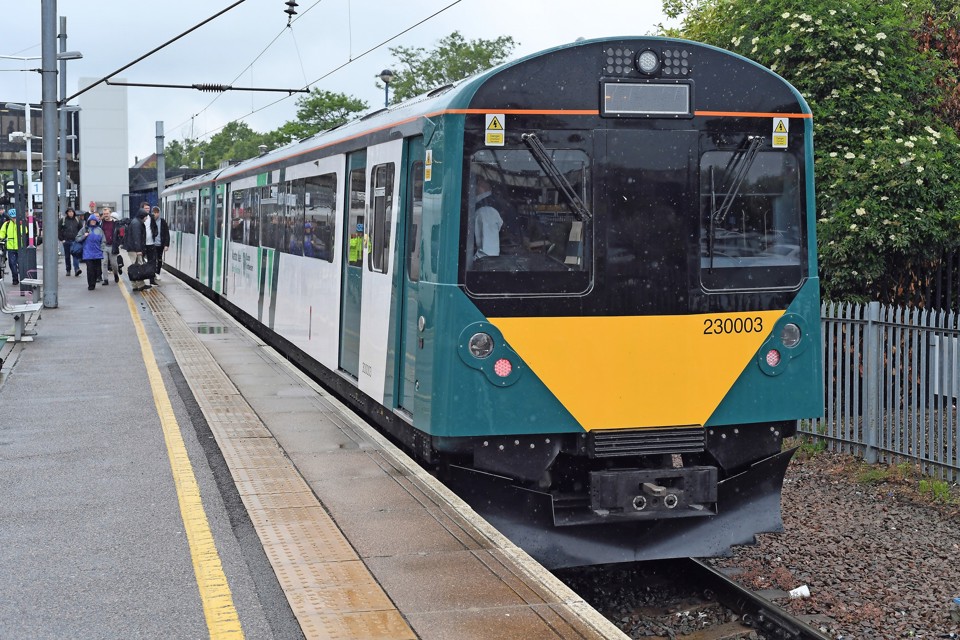
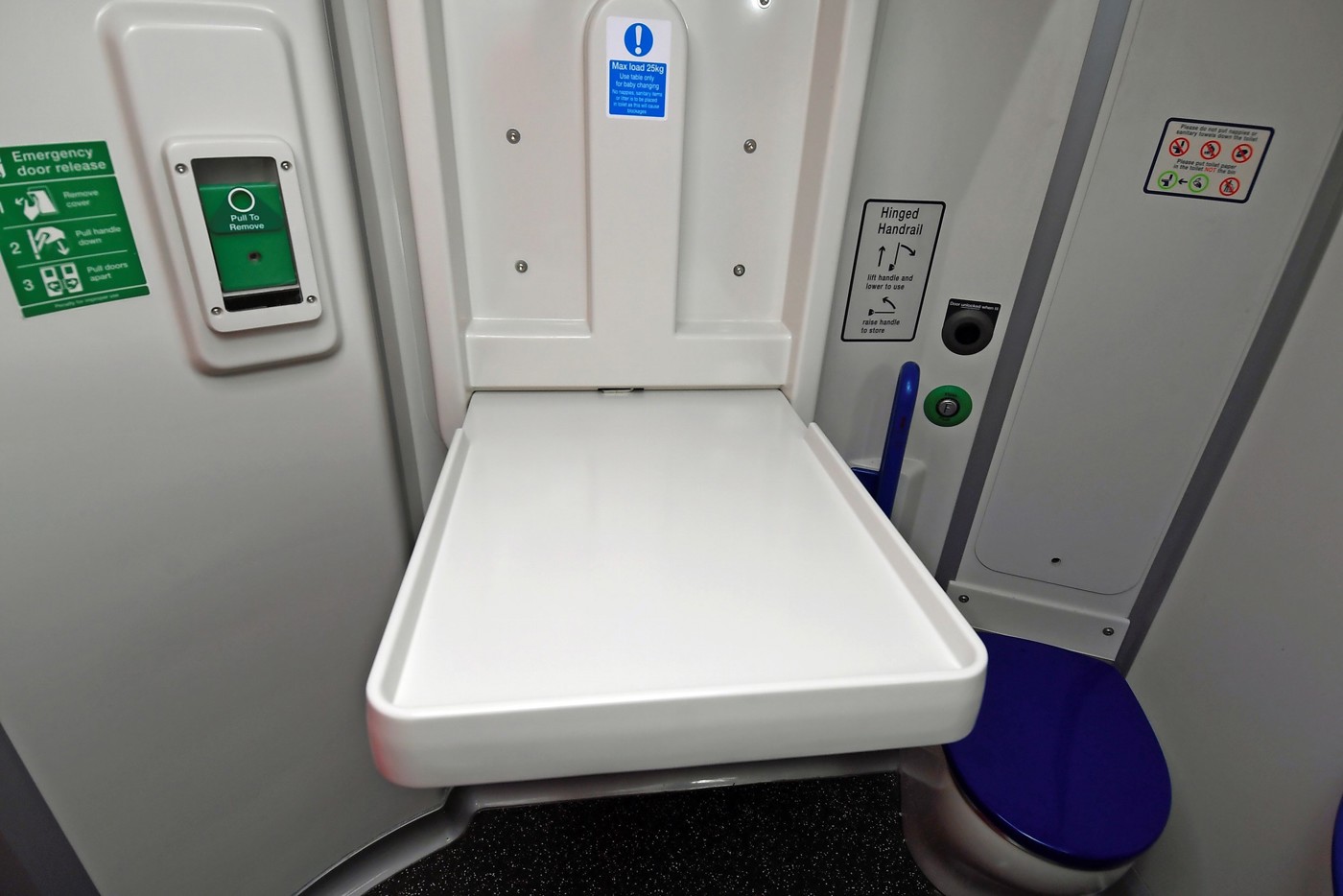
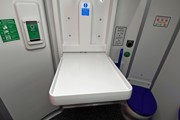
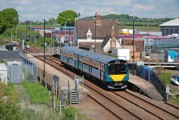
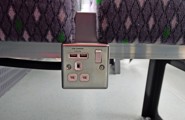

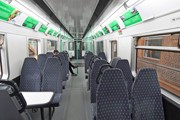
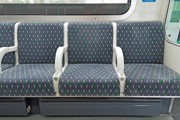
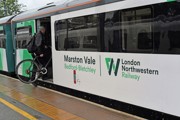
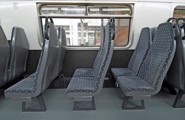
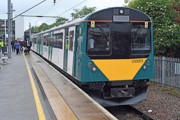
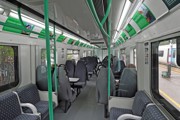
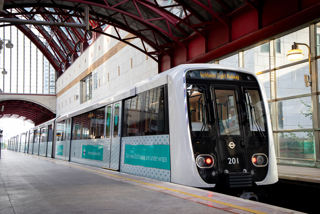
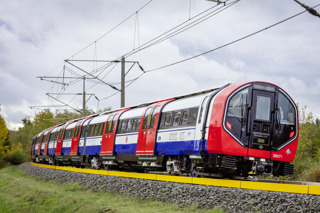

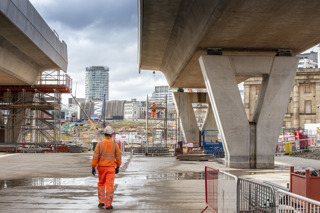
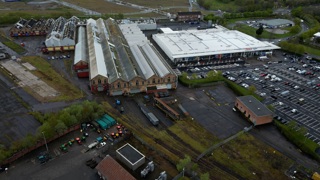











AndrewJG8918 - 17/09/2019 21:36
As London Northwestern Railway have started using the Class 230 on the Marston Vale Line. When will the Class 230 be introduced in service that Transport for Wales will be using them and to operate them in North Wales and Mid Wales as well the shuttle service between Wrexham General and Wrexham Central.